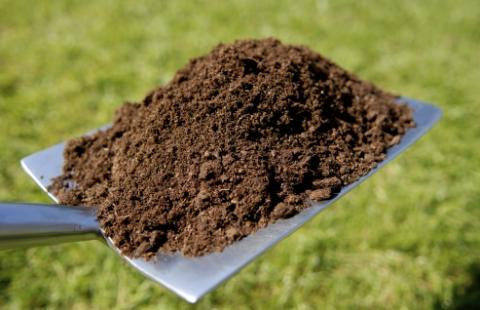What is a soil test?
The soil testing lab takes your soil sample, dries it, and runs a small portion of the sample through a series of sophisticated test equipment. The results provide a chemical inventory of the soil – clues as to the quantity of nutrients or elements in the soil and their availability for plant growth. The lab sends the results to UNH Cooperative Extension, where we interpret the numbers and provide you with specific lime and fertilizer recommendations for the plants or crops you intend to grow, based on our experience with New Hampshire soils and climate.
Nitrogen recommendations are based on crop need rather than on a soil nitrogen test.
What information is on the report form?
The soil test results are sent to you by email or via the U.S. Postal Service on a computer-generated report form. Each report has a common format.
• Lab ID: Each sample is given a unique number. Please refer to this number if you have any questions.
• Sample Name: The name you gave to this soil sample. For example, Front Lawn.
• Lab Run Date: The date the lab analyzed your soil.
• Staff Contact: Please contact this person if you have questions about your sample or the recommendations. For help in determining the suitability of fertilizers and calculating application rates, you may also call the Education Center and Info Line Monday-Friday, 9am – 2pm at 877-EXT-GROW (877-398-4769).
• Test Data: The soil is tested for pH, and selected nutrients. Charts 1 and 2 offer additional information.
• Recommendations: Recommendations for lime and fertilizers, based upon the crop(s) you intend to grow.

Lead screening
All home grounds and gardens soil samples are screened for lead. At high levels, lead is toxic to humans, and young children are at the highest risk. Plants do not readily incorporate lead into their tissues, but high levels of lead may be found on leafy vegetables (e.g. lettuce) or root crops grown in contaminated soil. Depending on the results of the “Lead Screen”, a series of recommendations will be given to minimize any risks that may be present. At higher levels, the recommendations will include doing a “Total Lead Analysis” to more accurately determine the levels of risk present in the soil. Since our main concerns are related to vegetable gardens, if lead contamination is present, non-edible crops can be grown. For further information on lead, refer to “Lead Screening for NH Soils”
Why doesn’t the lab test nitrogen?
Nitrogen is a very unstable element. Its availability changes from week to week as a result of biological activity in the soil and weather conditions. To accurately measure nitrogen, samples must be frozen immediately and shipped quickly to the lab – a very expensive process. Therefore, nitrogen recommendations are based on crop need rather than on a soil nitrogen test.
Why are there no recommended values given for minor elements?
Soil fertilizer and lime recommendations are made based upon years of field research. Scientists have looked at the level of nutrients in the soil, analyzed crop growth, and determined how much of certain nutrients are needed each year for specific crops. Most of this research has concentrated on major plant nutrients – Mg, Ca, K and P – those needed by plants in the largest amount and supplied by lime and fertilizer. While the minor elements (molybdenum, boron, copper, manganese, and zinc) can be tested, the research to interpret these results is limited. Their levels are usually present in the soil in sufficient quantity to allow for good plant growth without adding them to the soil in the form of fertilizers.
Glossary of terms on the report form
pH - Indicates whether the soil is acid or alkaline. 7.0 is a neutral level; less than 7.0 is acidic and greater than 7.0 is alkaline.
Although NH soils are naturally very acidic (pH 4.5 – 5.5), most plants prefer a pH range of 6.0 – 6.5. Exceptions are acid loving plants such as blueberries, azaleas, rhododendrons, mountain laurel and holly, which prefer pH 4.5 – 5.5. Lime is most commonly used to raise soil pH levels.
Mehlich 3 - Name of the test techniques used to remove or extract the nutrients/ elements from the soil sample.
ppm - Parts per million is the most commonly used term to describe the amount of each nutrient found in the soil. (Multiply this value by 2 to get approximate lbs per acre at a depth of 6 inches.)
Organic Matter - That portion of the soil made up of dead and decayed plant and animal parts. Organic matter provides nutrients for plant growth while improving the physical condition or tilth of the soil. NH soils often have 3-5% organic matter.
Ratings: L – Low, O –Optimum, H – High, VH – Very High
Download the Fact Sheet for printable version


